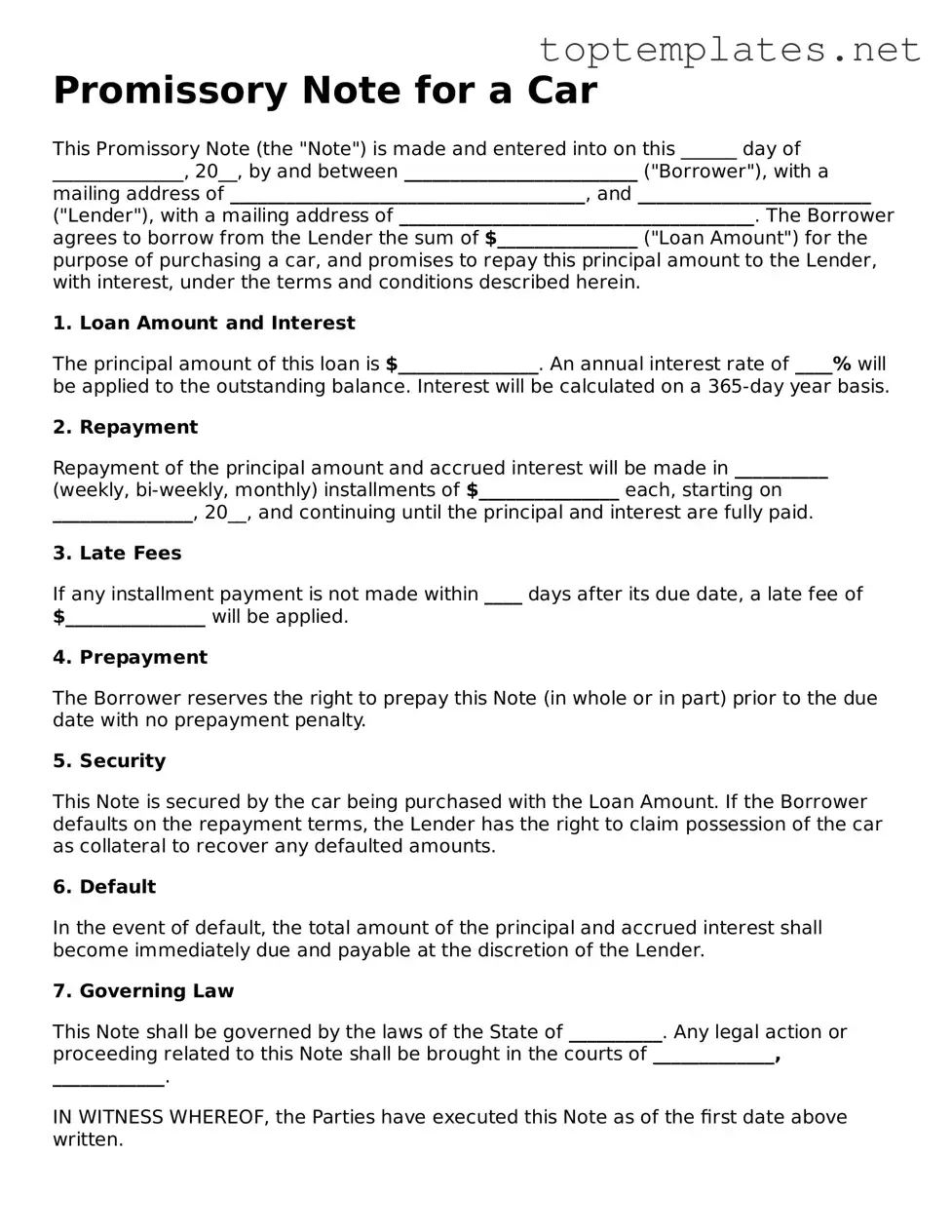Promissory Note for a Car
This Promissory Note (the "Note") is made and entered into on this ______ day of ______________, 20__, by and between
_________________________ ("Borrower"), with a mailing address of ______________________________________,
and _________________________ ("Lender"), with a mailing address of ______________________________________.
The Borrower agrees to borrow from the Lender the sum of $_______________ ("Loan Amount") for the purpose of purchasing a car, and
promises to repay this principal amount to the Lender, with interest, under the terms and conditions described herein.
1. Loan Amount and Interest
The principal amount of this loan is $_______________. An annual interest rate of ____% will
be applied to the outstanding balance. Interest will be calculated on a 365-day year basis.
2. Repayment
Repayment of the principal amount and accrued interest will be made in __________ (weekly, bi-weekly, monthly) installments of
$_______________ each, starting on _______________, 20__, and continuing until the principal and interest are fully paid.
3. Late Fees
If any installment payment is not made within ____ days after its due date, a late fee of $_______________ will be applied.
4. Prepayment
The Borrower reserves the right to prepay this Note (in whole or in part) prior to the due date with no prepayment penalty.
5. Security
This Note is secured by the car being purchased with the Loan Amount. If the Borrower defaults on the repayment terms,
the Lender has the right to claim possession of the car as collateral to recover any defaulted amounts.
6. Default
In the event of default, the total amount of the principal and accrued interest shall become immediately due and payable at the
discretion of the Lender.
7. Governing Law
This Note shall be governed by the laws of the State of __________. Any legal action or proceeding related to this Note shall
be brought in the courts of _____________, ____________.
IN WITNESS WHEREOF, the Parties have executed this Note as of the first date above written.
Borrower’s Signature: _______________________________________ Date: _________________
Lender’s Signature: _______________________________________ Date: _________________
